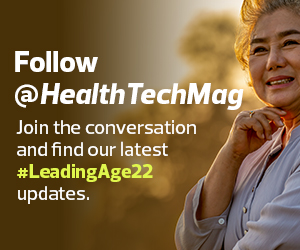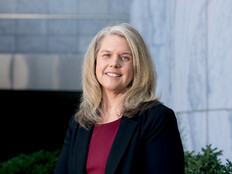Education and Training Are Vital to Digital Transformation
Older adults are adopting technologies such as smartphones, smart TVs, Internet of Medical Things devices, tablets and interactive voice solutions. Glen Tibbitts, corporate director of IT at United Church Homes, said the level of technology adoption and literacy among residents is wide ranging.
The organization is currently testing the use of Amazon’s Echo Show devices. Michael Hughes, senior executive vice president and chief transformation and innovation officer at United Church Homes, explained that training is being done in parts.
“It’s important to tie the technology to a meaningful outcome and then work with properties to iterate on that and create a virtuous circle,” he said. “First, we teach everyone to play music, then how to call family. Then staff will use the platform for setting reminders, and we’ll start to build on that.”
Training and building on the technology in stages can contribute to the success of a technology implementation because it gives residents and staff reasons to re-engage with the solution over time.
“You’ll find with a lot of technology solutions that there are 100 different things you can do in a workflow, but it all comes down to those top 10 things used most often,” said Hughes. “Find out what can be automated, and then find those resident champions to help drive adoption and use.”
Tibbitts added that IT should be involved in training as well. He started a “Tidbits from Tibbitts” program where staff and residents can listen in on service coordination calls to hear technology best practices, including cybersecurity tips.
Preparing for Future Bandwidth Needs in Senior Care
With the increase in technology use by residents and staff in senior care, and by clinicians in post-acute care settings, organizations need to ensure they have the proper network infrastructure to support their technology initiatives.
Majd Alwan, senior vice president of technology and business strategy at LeadingAge and executive director for the LeadingAge Center for Aging Services Technologies, pointed out that organizations looking to upgrade their network infrastructures need to keep in mind that bandwidth use is expected to increase as much as 60 percent each year. Because organizations are unlikely to upgrade their networks again for another five years, current upgrades need to be able to handle five years’ worth of growth in bandwidth usage by residents and staff.
EXPLORE: Tips for senior care organizations on upgrading their network infrastructure.
Tips for Digital Transformation Amid Nurse Shortages
Nationwide staff shortages are impacting many industries, but healthcare is experiencing the effects acutely as many clinicians feel burned out from the ongoing pandemic. To address these concerns, Lorelei Heineman, director of clinical services operations at United Church Homes, explained that the organization has implemented artificial intelligence to identify which patients are at risk for hospitalization.
Clinicians get notified via email or through the app and can address these concerns in morning meetings to prevent hospitalization.
United Church Homes’ leadership also is considering using AI for fall reduction, especially in memory care.














